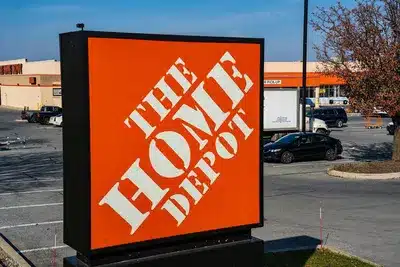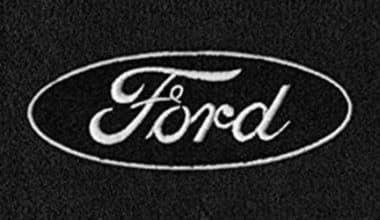Home Depot is one of the largest home improvement retailers in the world, with over 2,200 stores in the United States, Canada, Mexico, and China. But who owns Home Depot? Let’s find out…
Who Owns Home Depot?
The name “Home Depot” was coined by Ron Brill, Pat Farrah, Bernie Marcus, and Arthur Blank when they opened their first store in 1978.
The first two locations were in Atlanta, Georgia.
With over 400,000 associates, the company generates over $130 billion in sales each year.
For fiscal year 2022, the company reported net revenues of $135.8 billion.
Net earnings for the fiscal year were $14.1 billion, up from $11.2 billion the previous year.
In March 2023, Home Depot will begin trading publicly on the New York Stock Exchange (NYSE) under the ticker HD.
As a result, the company is owned by shareholders who can buy and sell the company’s stock on the stock market.
Home Depot’s largest shareholders are institutional investors such as mutual funds and pension funds, which own approximately 70% of the company’s outstanding shares.
However, the founders of Home Depot no longer own a significant stake in the company, which is a sad reality.
Bernie Marcus retired in 2002 and sold the majority of his stock.
Arthur Blank, who also owns the Atlanta Falcons, sold the rest of his stock in 2006.
Ron Brill and Pat Farrah have retired from the company.
The Current Leadership of Home Depot
Craig Menear, the current CEO of Home Depot, has been with the company since 1997.
Menear has served as executive vice president of merchandising and senior vice president of Hardline at Home Depot.
He took over as CEO in 2014, succeeding Frank Blake.
Craig Menear is one of ten directors on Home Depot’s board of directors.
Among the individual members are:
- Stephanie Linnartz, President and CEO of Marriott International
- Jeffery Boyd, Former CEO of Booking Holdings
- Mark Vadon, Co-founder and Executive Chairman of Blue Nile
- Armando Codina, Executive Chairman of Codina Partners
- Karen Katen, Former Vice Chairman of Pfizer
- Greg Brenneman, Chairman of CCMP Capital Advisors
So, because Home Depot is a publicly traded company, its shareholders are also its owners.
Over the years, the company has consistently produced strong financial results and has maintained its position as one of the largest merchants.
Is the Same Company Behind Home Depot and Lowe’s?
No, Home Depot and Lowe’s are not owned by the same corporation. They are both owned by different public entities.
Lowe’s and Home Depot do not own each other. Their stock is publicly traded on the stock exchange, and anyone wanting to invest in it can do so.
Home Depot went public in 1981, with shares priced at $12 each. Its top five institutional shareholders are as follows:
- The Vanguard Group – 8.3%
- SSgA Funds Management Inc – 4.52%
- BlackRock Fund Advisors – 4.36%
- Capital Research and Management Company – 3.67%
- Fidelity Management and Research Company – 1.68%
No entity on this list owns more than 50% of Home Depot, so it operates independently rather than as a subsidiary.
Lowe’s went public in 1961, with shares selling for $12.25. Its top five institutional stakeholders are as follows:
- The Vanguard Group – 7.96%
- SSgA Funds Management Inc – 4.44%
- BlackRock Fund Advisors – 4.35%
- Fidelity Management and Research Company – 3.11%
- JP Morgan Investment Management – 1.89%
Lowe’s and Home Depot have the same top three owners but are all minority owners. As a result, they lack majority control.
History of Home Depot
Bernie Marcus and Arthur Blank had the idea to start Home Depot in a coffee shop in 1978. The two were DIY enthusiasts, and they envisioned a superstore that would provide customers with a diverse selection of merchandise at competitive prices and excellent customer service.
The first two stores opened in Atlanta, GA, in 1979, with assistance from investment banker Ken Langone and merchandising expert Pat Farah. By the end of 1979, they had opened three stores, hired 200 people, and had average weekly sales of $81,700.
On September 22, 1981, Home Depot went public on the NASDAQ. In 1989, they opened their 100th store in Monrovia, California, and in 1990, they became the largest home improvement retailer in the United States.
In the years that followed, the company acquired other businesses to help it enter new markets, such as Aikenhead’s stores in 1994 to form the Canadian division.
Home Depot now operates over 2,200 stores across three countries.
History of Lowe
Lowe’s was founded in 1921 as Lowe’s North Wilkesboro Hardware. The owner, L.S. Lowe, sold dry goods, groceries, and sewing notions, among other things.
After his father, L.S. Lowe, died in 1940, Jim Lowe took over the store. He ran it through WWII and soon after offered his brother-in-law, Carl Buchan, a stake.
Modern-day Carl Lowe founded Lowe’s in 1946, anticipating an increase in construction following WWII and focusing on home improvement merchandise. In 1949, the second store opened in Sparta, North Carolina.
Carl wanted to make Lowe’s a national company, so he ended his joint ownership with Jim Lowe. The company expanded steadily and went public in October 1961. It was listed on the New York Stock Exchange and the London Stock Exchange in 1979 and 1989, respectively.
Lowe’s achieved its first billion-dollar sales year in 1982, marking a watershed moment in the company’s expansion strategy. It also launched lowes.com in 1995 and opened its first stores outside the United States in Canada in 2007.
Lowe’s is now the second-largest home improvement retailer in the United States.
Five Distinctions Between Lowe’s and Home Depot
- Home Depot stores are orange and black in color, with tall shelves that can only be reached by forklifts. Lowe’s stores are blue and white in color, with elaborate floor displays and themed products.
- Home Depot’s strategy is to increase distribution centers to increase profitability, whereas Lowe’s strategy is to strengthen its bottom line by closing underperforming stores.
- When compared to Lowe’s, Home Depot generates more revenue and sales. Home Depot had 132.11 billion US dollars in sales in 2020, while Lowe’s had 89.6 billion US dollars.
- Home Depot has had international success with stores in Canada and Mexico, whereas Lowe’s has had little success with its international ventures, having been forced to close most of them.
- Home Depot leads in contractor services, while Lowe’s has an advantage in DIY services due to its emphasis on staff assistance for novices.
Is Lowe’s More Expansive Than Home Depot?
No. Home Depot is the largest home improvement retailer, with Lowe’s coming in second.
Home Depot has over 2,300 stores in the United States, Canada, and Mexico, while Lowe’s has about 2,000 stores in the United States and Canada.
Lowe’s has a market cap of $150 billion, while Home Depot has a market cap of $365 billion.
Home Depot is clearly larger than Lowe’s based on financial valuation.
Why Are Lowe’s and Home Depot Frequently Located Next to Each Other?
Both of these businesses must follow city zoning regulations. Home Depot and Lowe are large establishments, and the laws that govern them are stricter than those that govern small businesses.
They need large lots to set up shops and don’t have many options for finding this space in cities. They frequently settle on similar locations after conducting research on the best places to set up shop.
Home Depot and Lowe’s would probably prefer to be in different locations, but the laws don’t allow them to do so.
Who are Home Depot’s Competitors?
Lowe’s is Home Depot’s main competitor. However, these two companies aren’t the only ones in this market; there are others that give Home Depot a run for their money. They are as follows:
- Ace Hardware – This is a home improvement and supplies retailer with over 5,000 locations in 60 countries. Its strengths include a wide range of products and efficient distribution channels.
- Menards – This is a home improvement retailer with 335 locations in the United States. Its competitive advantages are its ability to provide customers with technical expertise as well as high-quality products at reasonable prices.
- Home Hardware – This Canadian home improvement retailer operates 138 stores across North America. It takes pride in providing a diverse range of goods as well as exceptional operational excellence, which translates into a positive customer experience.
- Amazon – This online retail giant has a large selection of home improvement products, which qualifies it for inclusion on this list. Its advantages include strong supply chain capabilities and affiliate marketing programs that boost revenue on its platform.
Who Owns Home Depot: Related Articles
- HOME DEPOT LOAN: Can You Get a Loan From Home Depot?
- BEST PERSONAL LOAN COMPANIES 2023 (Detailed List)
- Who Owns Pokemon? Did Nintendo Buy It? (Detailed Guide)
- Who Owns Google? Everything You Should Know
- HOME DEPOT AFFILIATE PROGRAM: All You Need to Know and More
- Fashion Logos: The Top 2023 Designs & Backstories
- Lowes Logo: Meaning, Font, History & Evolution
- Who Owns Monster Energy? What You Should Know






